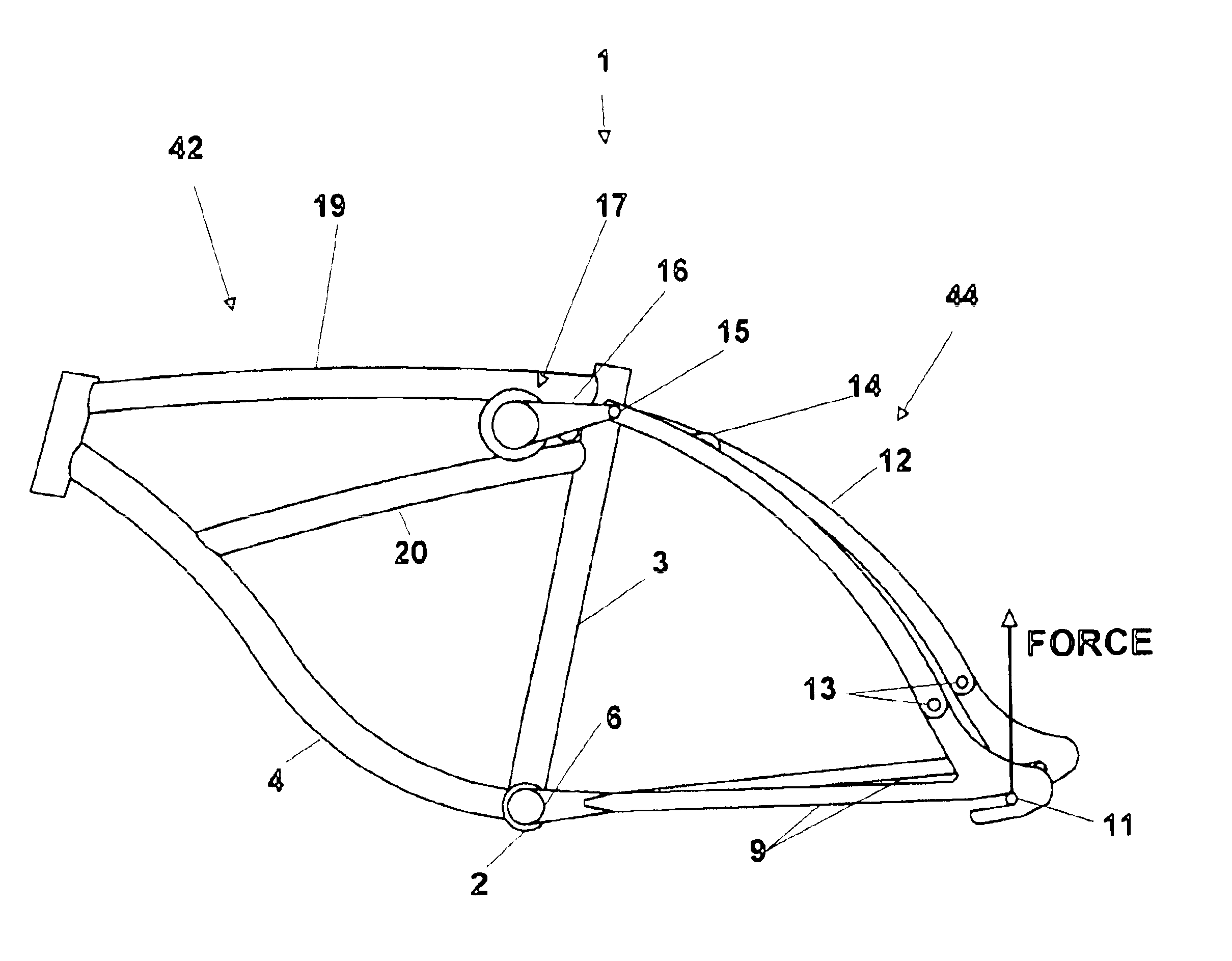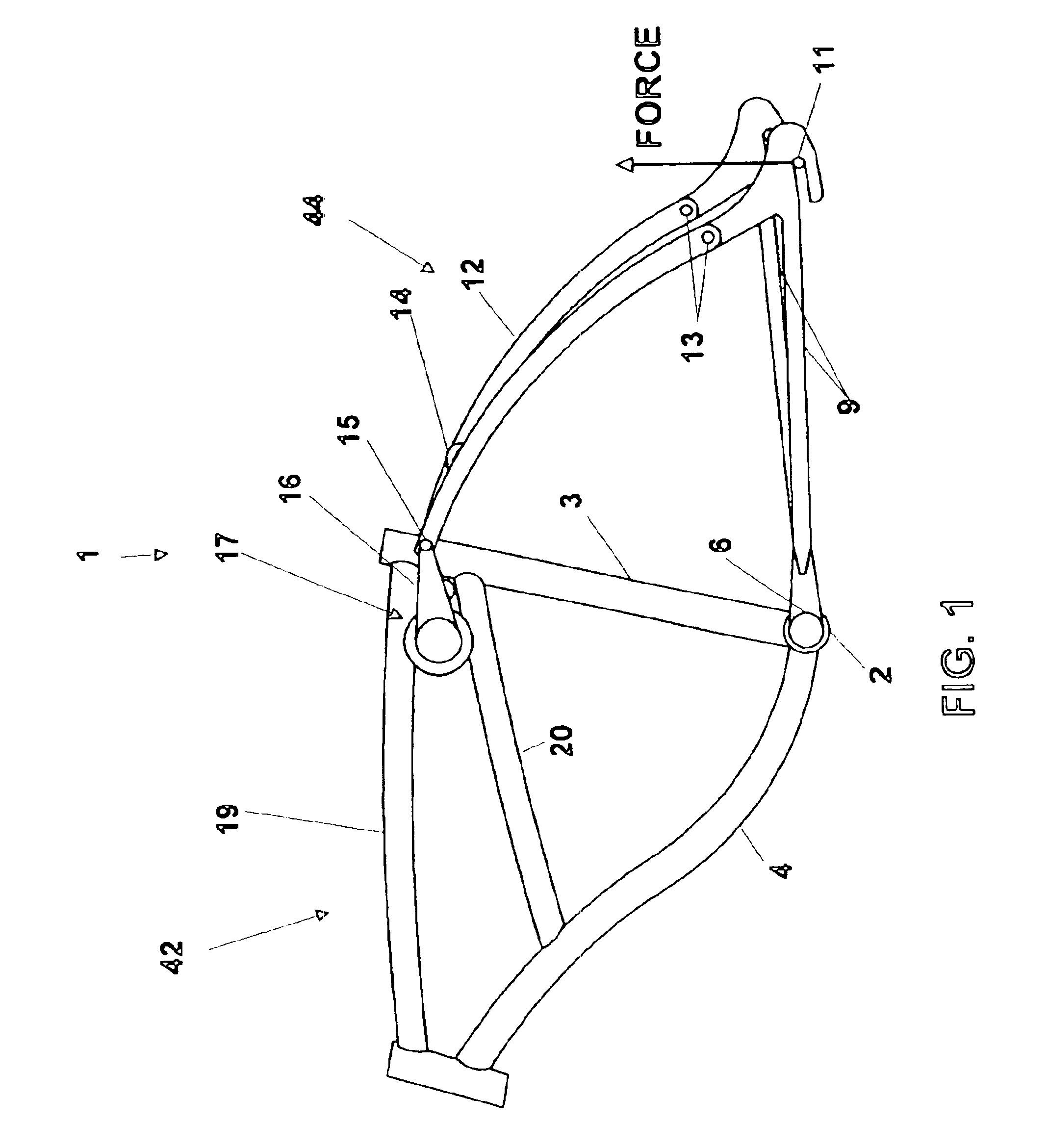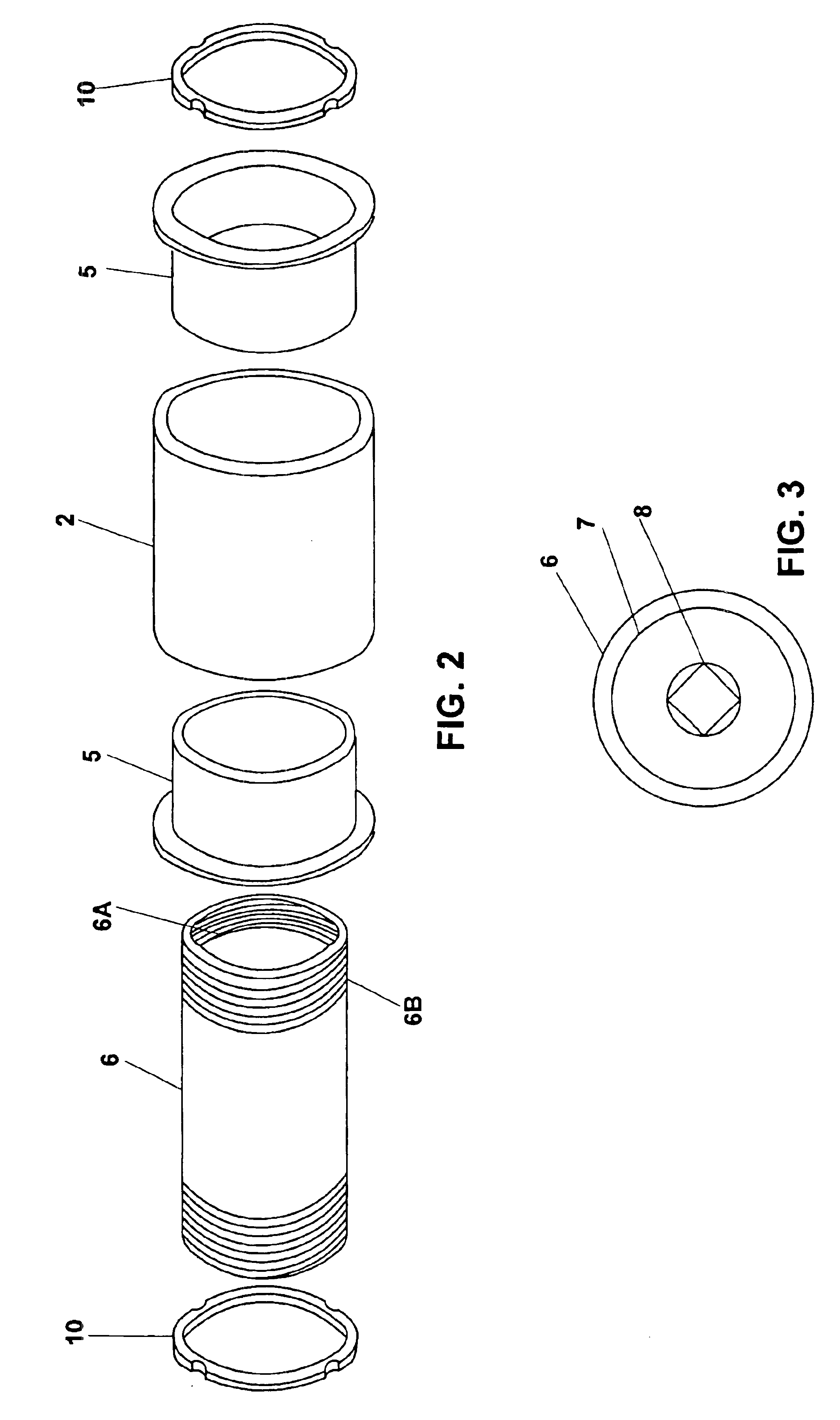Bicycle with shock absorber
a technology of shock absorber and bicycle, which is applied in the direction of friction roller based transmission, steering device, cycle equipment, etc., can solve the problems of rear frame protectors and hangers, bicycle drop is subject to tremendous amounts of stresses and forces, and bicycles are subject to enormous stress and forces
- Summary
- Abstract
- Description
- Claims
- Application Information
AI Technical Summary
Benefits of technology
Problems solved by technology
Method used
Image
Examples
first preferred embodiment
[0040]The present invention may be utilized with most pre-existing bicycle frames. However, for the preferred embodiment, a cruiser type frame was modified. The frame of the cruiser bicycle is shown as bicycle frame 1 in FIG. 1. The procedures for modifying a bicycle to accept the present invention and the use of the present invention are listed below.
Concentric Relative Rotation Bottom Bracket Pivot
[0041]Aluminum bottom bracket housing 2 is welded to bicycle frame 1 at the intersection of seat support tube 3 and down tube 4, as shown in FIG. 1. The elements that comprise the bottom bracket pivot assembly are illustrated in FIG. 2. Sleeve bearing 5 is a dry, self-lubricating plastic bearing. Sleeve bearing 5 press fits into aluminum bottom bracket housing 2. Aluminum bottom bracket shell 6 slips freely inside both sleeve bearings 5 so as to rotate on sleeve bearings 5. Bottom bracket shell 6 has internal threads 6A so that bearing casings 7 can be threaded onto both sides of bottom ...
second preferred embodiment
Rubber Torsion Shock Absorber—with Hysteresis Damping
[0052]A second preferred embodiment utilizes hysteresis damping to dampen the motion of torsion spring 50. Hysteresis damping as applied to a spring is where spring energy is dissipated through the deformation of a resilient, substantially solid state damping material. In a preferred embodiment of the present invention, the substantially solid state material is rubber.
[0053]A second embodiment of torsion spring assembly 17 is made by substituting the elements described in FIG. 6E (i.e., plastic friction washers 25) with elements described in FIGS. 8A and 8B. Instead of placing plastic friction washers 25 between torsion arms 16 and outer housing 18B, components are inserted to add a damping effect to the torsional motion resisted by torsion spring 50. As seen in FIG. 8B, outer housing 18B has key cutout 18C. Elastomer plate 26 is made out of a high loss factor rubbery substance. Metal elastomer backing plate 26A is cut to fit at k...
second embodiment
Installing Second Embodiment
[0054]All procedures of installing the second embodiment are identical to that of the first embodiment through the installation of actuation shafts 23. Elastomer plates 26 are bonded to elastomer backing plates 26A, which are then keyed to key cutout 18C of outer housing 18B. Rolling indentors 28 are then placed against rolling indentor retainers 27 and both are slid over actuation shafts 23 and pressed against elastomer plates 26. Torsion arms 16 are then slid over shafts 23 and the entire assembly is tightened with bolt 24 and nut 24A as described above under the first embodiment.
Operation of the Damper
[0055]As torsion arms 16 cause actuation shafts 23 to rotate, indentor retainers 27 rotate as well. However, elastomer plates 26 remain essentially stationary because they are keyed to key cutout 18C of outer housing 18B. Between rotating elastomer plates 26 and indentor retainers 27 are rolling indentors 28. As indentor retainers 27 rotate around shafts ...
PUM
 Login to View More
Login to View More Abstract
Description
Claims
Application Information
 Login to View More
Login to View More - R&D
- Intellectual Property
- Life Sciences
- Materials
- Tech Scout
- Unparalleled Data Quality
- Higher Quality Content
- 60% Fewer Hallucinations
Browse by: Latest US Patents, China's latest patents, Technical Efficacy Thesaurus, Application Domain, Technology Topic, Popular Technical Reports.
© 2025 PatSnap. All rights reserved.Legal|Privacy policy|Modern Slavery Act Transparency Statement|Sitemap|About US| Contact US: help@patsnap.com



